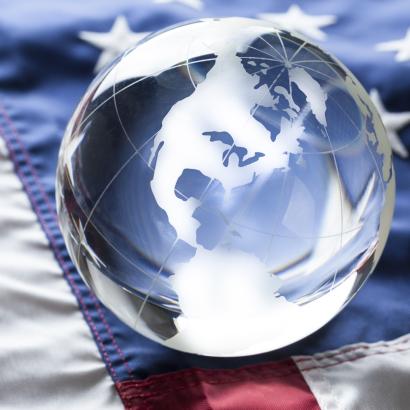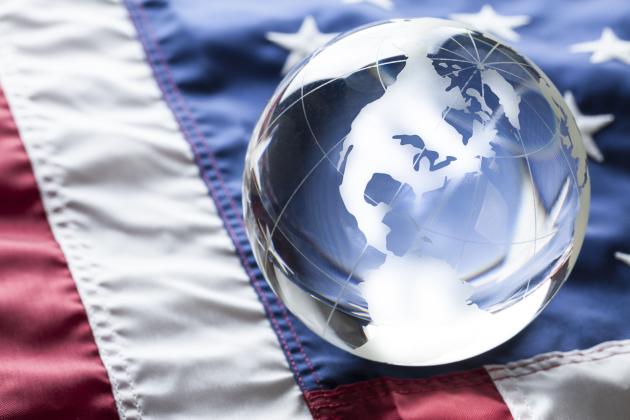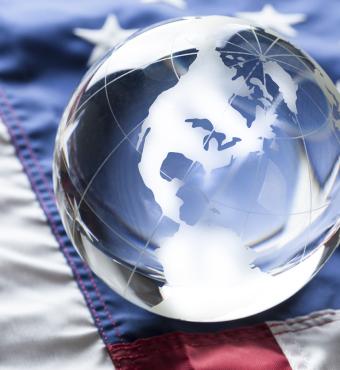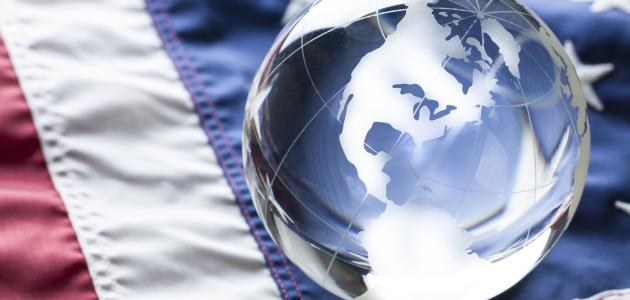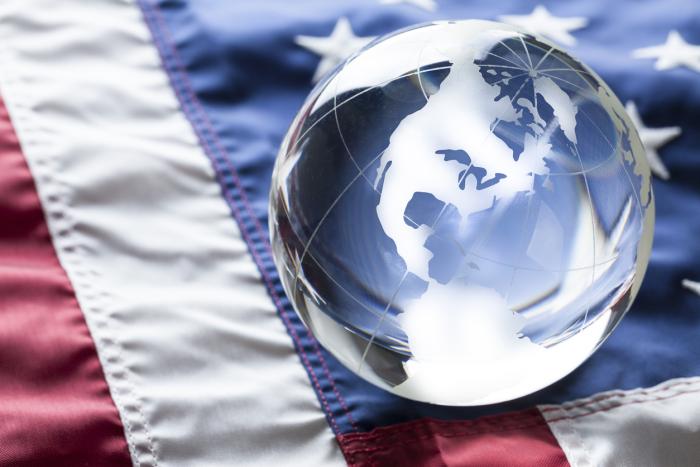- International Affairs
- Key Countries / Regions
- Middle East
The gap between aspiration and achievement in human rights promotion is a long-standing feature of U.S. foreign policy. We Foreign Service Officers learn early that, however genuine our intentions, there are natural limits to what is achievable. Competing security and commercial interests may lessen Washington´s zeal for confrontation. A host country may be impervious to our approaches. Fortunately, human rights advocacy is not an all-or-nothing proposition. Policymakers and diplomats merely need to learn the terrain and identify achievable victories. We must also question: Which rights are most fruitful to raise? Which diplomatic tools can succeed? Which partners best complement our efforts? Above all, which changes can we make in our own democracy to present a model worth emulating?
U.S. foreign policy contained a moral dimension from the beginning, albeit as well-wisher more than intervening force. Responding to the South American wars of independence, then-Secretary of State John Quincy Adams pronounced that America “goes not abroad, in search of monsters to destroy. She is a well-wisher to the freedom and independence of all … a champion and vindicator only of her own.”1 Ironically, at the behest of abolitionists Congress authorized the U.S. Navy in 1819 to deploy an Africa Squadron to suppress the slave trade – an effort that certainly took on the character of slaying a monstrous institution (though one which sadly continued within the United States for nearly a half century).
Establishing in 1977 the Department of State´s Bureau for Human Rights and Humanitarian Affairs, President Carter declared, “Our policy is based on an historical vision of America’s role … our policy is rooted in our moral values, which never change. Our policy is reinforced by our material wealth and by our military power. Our policy is designed to serve mankind.”2 Such lofty goals stirred the public imagination but faced criticism once the Carter Administration distanced itself from pro-American, authoritarian governments in Nicaragua and Iran, only to see them toppled by anti-American regimes with worse human rights practices.3 Nonetheless, human rights promotion remained a tool for subsequent administrations.
Surveying the human rights debate in 1979, even the renowned realist thinker Hans Morgenthau, acknowledged the inevitable moral element in the conduct of foreign policy, but considered the United States “incapable of consistently following the path of defense of human rights without maneuvering itself into a Quixotic position” given the competing demands in security and commerce. He advised the U.S. to abide by Abraham Lincoln´s advice, which he summarized as avoiding “exaggeration of moral virtue we claim for ourselves,” and recognizing “limits within which man can act morally and at the same time have a chance for success.”4
Which Rights are Most Fruitful to Raise? Start with the Universal Declaration
Secretary of State Henry Kissinger was a famous skeptic of human rights diplomacy. After the Pinochet regime overthrew Chilean President Salvador Allende, Kissinger complained to his aides that his briefing memos were filled with nothing but human rights. “The State Department is made up of people who have a vocation for the ministry,” Kissinger quipped. “Because there were not enough churches for them, they went into the Department of State.” He later remarked in his 1994 book “Diplomacy” that “however powerful America is, no country has the capacity to impose all of its preferences on the rest of mankind.”
The solution to the complaint that human rights reflect cultural chauvinism rests in the Universal Declaration on Human Rights (UDHR)5, since all UN member states have voluntarily signed on. While legally non-binding, the ubiquity of the UDHR allows it to be used as a basis for advocacy and discussion with all nations. Freedom of expression, religion, association, peaceful assembly, access to legal redress, and fair trial all feature in its articles. Numerous other multilateral bodies commit their members to democratic and human rights standards.
As the U.S. (in the person of Eleanor Roosevelt) co-drafted the UDHR and embraced it as a guideline for global human rights advocacy, so the newly established U.S. Commission on Unalienable Rights reemphasized the centrality of these broadly acknowledged principles in its 2020 report.6 A focus on those foundational rights acknowledged by all governments gives diplomats an opening to advocate for victims of human rights abuse. This includes those whose actions we may not endorse, but whom a host government subjects to excessive punishment. Accusations of blasphemy are an example of this approach, and not only in the Islamic world. In Russia, when a “guerrilla theater” group Pussy Riot performed naked in a Moscow cathedral to protest the Orthodox Church´s support for President Putin, the U.S. Embassy could certainly not condone such an act, but it could criticize as “disproportionate” the lengthy sentences that a Russian court handed down.7
Which Diplomatic Tools Can Succeed? Behind the Scenes Might Work Better
Presidential Directive 30, signed by President Carter in 1978, lists the tools of public statements, leverage on economic and military aid, consultations with allies, and cooperation with non-governmental organizations (NGOs) and international organizations (IOs).8 Whether these tools are deployed publicly or behind the scenes is a key consideration. Public criticism can broadcast to the world our standpoint but at the risk of raising hackles and hardening positions. Press releases (or Tweets) are too often the “easy button,” allowing appearance of action without investment of time. However, subtle engagement can often achieve more, since the host country has less face to lose and more flexibility to accommodate a request. But this requires more work.
At U.S. Embassy Moscow, the promotion of human rights and religious freedom was a priority -- albeit one among many. The Kremlin viewed rights advocacy as an irritant and tried to discourage us. Whether the Embassy´s “naming and shaming” shaped Kremlin behavior is hard to assess. However, I believe we achieved much with the quiet understated efforts: attending the trials of persecuted dissidents, visiting the wrongly imprisoned, hearing the concerns of banned opposition politicians, financially supporting non-partisan civil society groups, and arranging the resettlement of asylum seekers. To borrow religious terminology, bearing witness and walking the extra mile are often more impactful in human rights advocacy than preaching from the pulpit.
Which Partners Best Complement Our Efforts? Value Honest Brokers and Non-Partisans
Human rights advocacy is enabled through partnerships with local and multinational NGOs, international organizations, bilateral partners, and host governments. The capacity and character of these stakeholders can make or break our efforts. Partnerships with other nations or organizations act as “force multipliers.” Globally, we are more effective in resolving crises when we are joined by likeminded governments and organizations. This dynamic was evident in Eastern Europe and the Balkans where the Organization for Security and Cooperation in Europe (OSCE) served as an honest broker in civil conflicts and election disputes.
Many NGOs contribute to the improvement of human rights and stability, though the temptation to play favorites is strong. I witnessed this in Albania in 1997, when the country began to spiral towards anarchy in response to the collapse of pyramid schemes. Far from sharing the alarm of myself and my colleagues, some international NGO reps were giddy at the prospect of the Berisha government´s collapse – until they begged the Marines to evacuate them.
In those situations where the United States seeks to encourage stability and unity in a host country, it makes a mistake when it aligns itself with NGOs with ulterior motives. Certainly, host government leaders are prone to ascribe malevolence even to well-intentioned partners, but the U.S. government as a leading donor would do well to select only those partners who are willing to work constructively to enhance human rights and civil society.
Which Changes Should We Make to Present a Model Worth Emulating? Any and All.
I recall a meeting with a long-time opposition democratic leader following the 2008-2009 global financial crisis. “If you want to help us,” he chided, “get your own house in order – give us something to aspire to!” How much more appropriate would this advice be today in view of widespread media bias, high-tech social media censorship, cancel culture, de-platforming, mob violence, chaotic elections, mistrust of law enforcement agencies, and partisanship at every level of the supposedly non-partisan bureaucracy and judiciary? Which American institutions are now worth emulating?
The response, I hope, is not to abandon our diplomatic advocacy of human rights, but to proceed more humbly, emphasize recognized universal rights, practice the role of witness over finger-wagging moralist, vet partners more carefully, and acknowledge our own shortcomings. The U.S. has a story to share, but it is one of constant struggle to live up to our ideals. If we are to lead by example, rather than mere advice, we must improve the balance at home – get our own house in order and give the world something to aspire to.
Eric K. Lundberg is a retired U.S. Foreign Service Officer with 30 years of experience. The opinions expressed in this article are his own.








